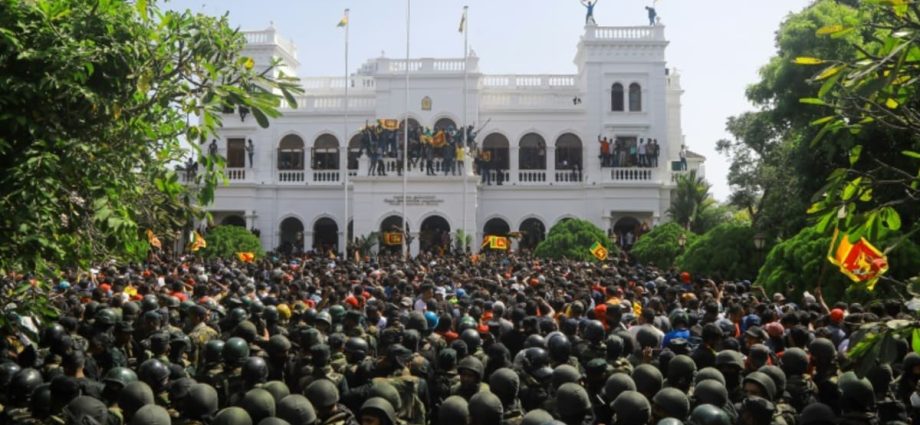
“THEY HAD NO ALTERNATIVE”
As head of the Inter-University Students’ Federation (IUSF) at the time, Mudalige stood at the forefront of last year’s street protests.
Alongside him was a broad coalition of saffron-robed Buddhist monks, minority activists and ordinary citizens outraged by government corruption and mismanagement of the island’s worsening economic tailspin.
“They had no alternative but to take to the streets because they had no fuel, no food, no electricity … people were dying in petrol queues,” Mudalige said.
In July the IUSF and its allies laid siege to the Presidential Palace in Colombo.
Rajapaksa, once lauded by the island’s Sinhalese majority for helping crush a decades-long Tamil separatist insurgency, was forced to evacuate the residence through a secret backdoor and temporarily fled the country.
Protesters streamed through the compound, gaping at its opulent furnishings and frolicked in its pool in the revelry that followed.
Rajapaksa’s successor, Ranil Wickremesinghe, quickly sought to restore order by directing police to arrest the movement’s leaders.
Mudalige was caught in the dragnet the following month when police snatched him off the street as he left a demonstration against the crackdown.
He spent 167 days in custody, the longest stretch of detention of all those who participated in last year’s revolt.
The most serious charges against him were eventually dropped after Amnesty International and other rights groups condemned his jailing.

